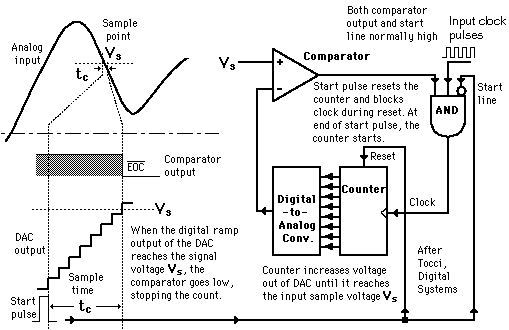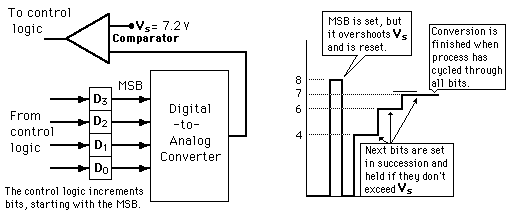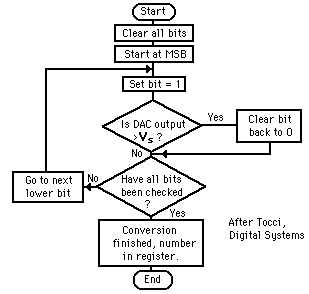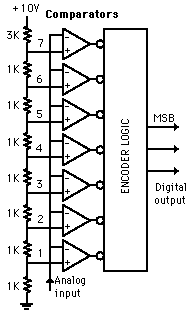Digital Ramp ADC

Conversion from analog to digital form inherently involves comparator action where the value of the analog voltage at some point in time is compared with some standard. A common way to do that is to apply the analog voltage to one terminal of a comparator and trigger a binary counter which drives a DAC. The output of the DAC is applied to the other terminal of the comparator. Since the output of the DAC is increasing with the counter, it will trigger the comparator at some point when its voltage exceeds the analog input. The transition of the comparator stops the binary counter, which at that point holds the digital value corresponding to the analog voltage.
| Analog-to-Digital Converters |
Electronics concepts
Digital Circuits
Reference
Tocci
Digital Systems, Sec 10-8.
| HyperPhysics*****Electricity and magnetism | R Nave |


